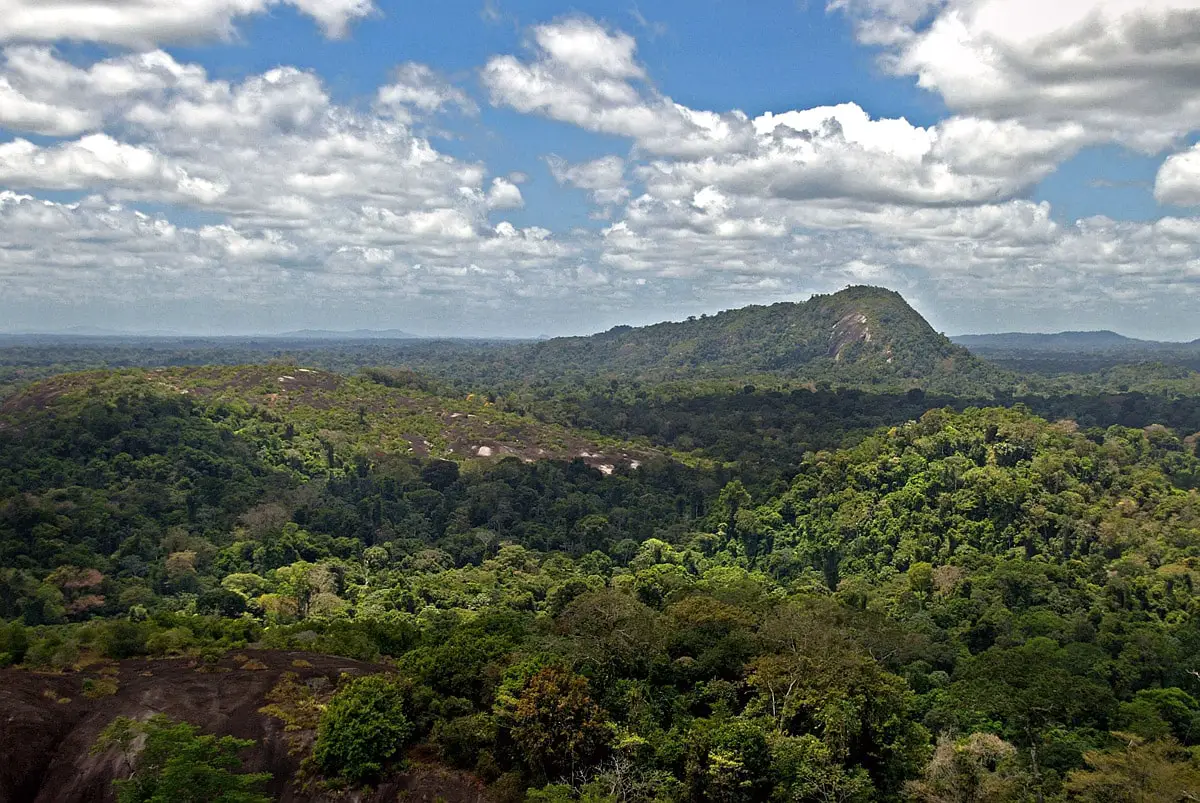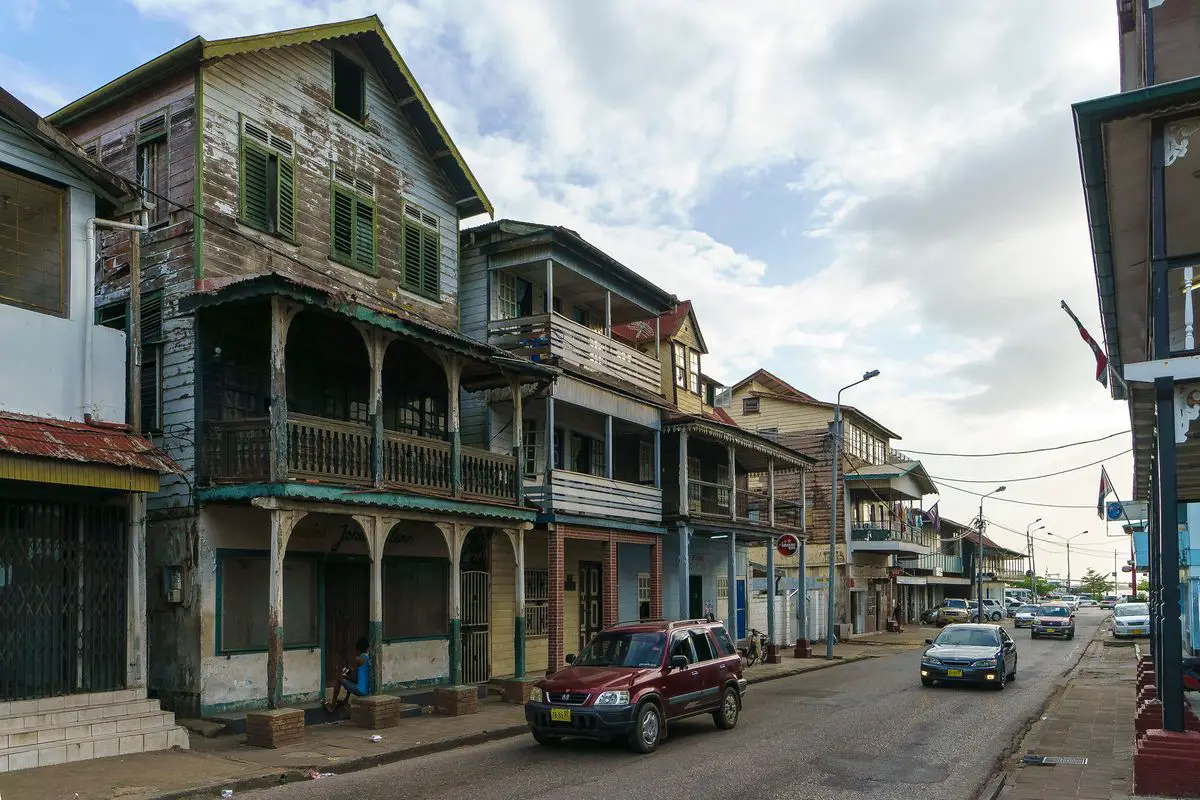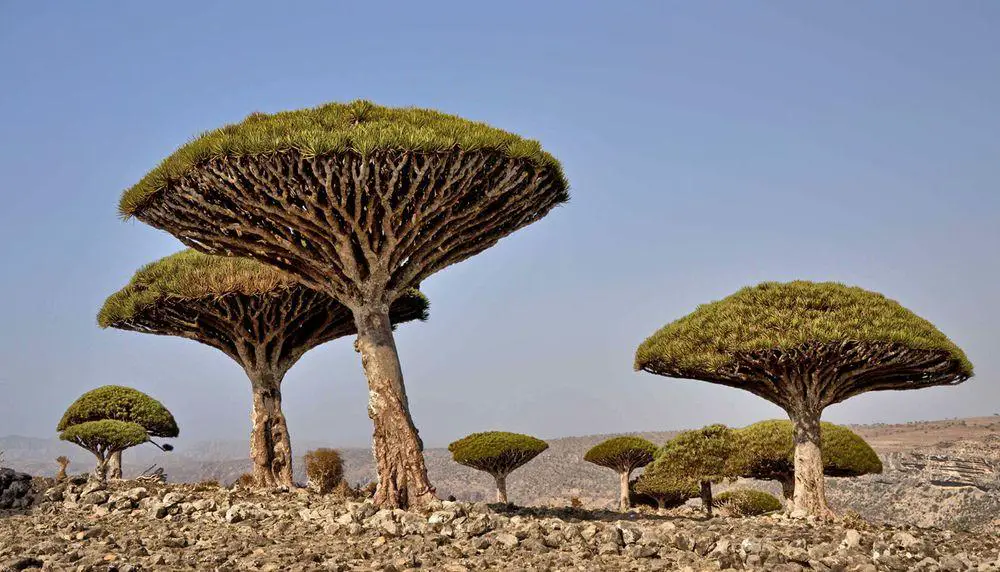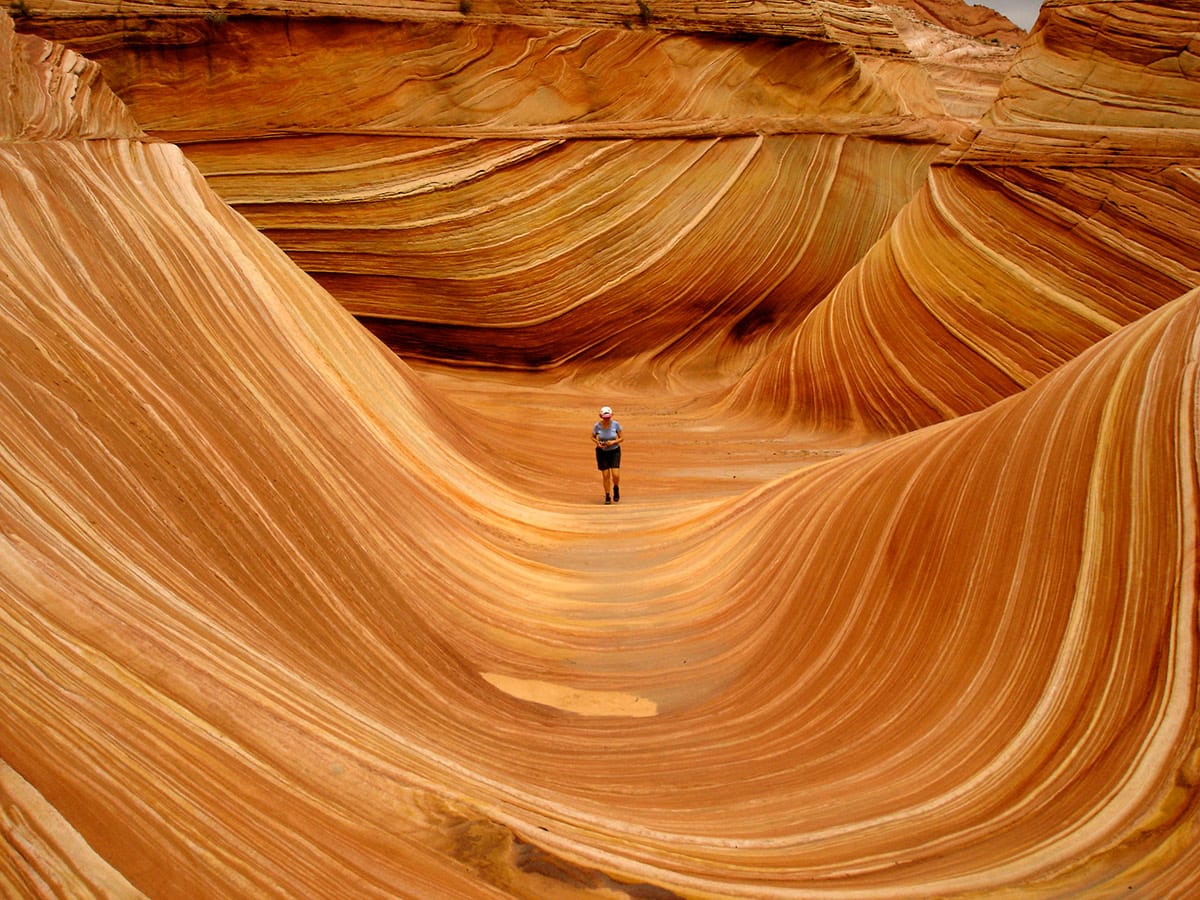World 🢖 South America 🢖 Suriname
Monoliths 🢔 Rock formations 🢔 Geological wonders 🢔 Categories of wonders
Wonder
Voltzberg

 In short
In short
The little known upper reaches of Coppename River are covered with virgin tropical forest. In several locations above the rainforest rise dark grey giants – granite domes. The best known of these giant rocks is Voltzberg. Although it is visited by several hundreds of tourists each year, this beautiful monolith and its surroundings still hide many secrets waiting to be discovered.
 46.8%
46.8%
GPS coordinates
Location, address
Height
UNESCO World Heritage status
Map of the site
If you see this after your page is loaded completely, leafletJS files are missing.
 In detail
In detail
Late discovery
It is believed that the first European to see this granite dome was German geologist Franz Voltz who traveled here along the Coppename River in 1855. Unfortunately, he died in this same year without leaving an exact report. Most likely he did not reach this mountain. He might have seen it from some 8 km distance while boating in a straight segment of Coppename with a granite dome forming a beautiful backdrop. We truly might believe that he did not reach the mountain – he considered this rock to be a chalk formation. If such an experienced geologist would reach the mountain, he would immediately identify that this is granite.
The current name of this mountain – Voltzberg – was given by K.Martin in 1881 – he considered that the name of the discoverer should be given. Also, K.Martin did not reach this mountain – his expedition was busy passing the rapids of Coppename River – Raleighvallen.
Only in 1901 the mountain was reached and ascended by the members of the Coppename Expedition led by L.A.Bakhuis. They considered that this high mountain is a suitable place to overlook the wast, unexplored jungle south from the rapids of Raleighvallen. As explorers reached the summit, beautiful landscape unfolded – there was seen the endless, undulating cover of lush rainforest with occasional dark grey giant rocks rising high above it.
Just 5 kilometers to the east stood an even higher granite dome – it was named Van Stockumberg after a member of the expedition. This 362 m high mountain is rising more than 250 m above the jungle. 20 kilometers to the south rises an even larger granite dome – the 453 m high Van de Vijcktop, rising 380 m above the surrounding plain. This mountain was named after the chairman of the Joint Commission of the Royal Netherlands Geographic Society.
This may sound weird – but the vast area around Voltzberg is not inhabited and has not been inhabited over the last centuries. Nature here is untouched by humans – and this is very rare even for this remote part of South America.
Not always it has been like this. In the surroundings of Voltzberg have been found simple stone tools. In the valley of one creek near Voltzberg, there have been found even petroglyphs. We can guess where the people disappeared – either they were eradicated by aggressive Caribs or died off from the awful infection diseases brought by Europeans.
Description and geological history
Voltzberg is a cliff monolith consisting of 1.8 – 2 billion years old biotite granite. It has two tops divided by a fissure – one top has 245 m height above the sea level, another is 209 m high. Monolith rises up to 150 meters above the surroundings. It is some 1.1 km long in the north-south direction and up to 700 m wide in the east-west direction.
As most granite monoliths in Suriname, Voltzberg has very steep, in some places nearly vertical sides. Mountain is bare, only on the summit, there is sparse vegetation.
Granite inselbergs of Suriname have formed over a long time period by the weathering process. At those time periods when this area was covered by tropical forest (as it is now) the granite was weathered by the vegetation. Forest turned the granite into loam and gravel up to several meters deep. There were though more resistant areas where the soil did not form: such sectors were little affected by erosion.
When Earth entered into glacial ages, the area of present-day Suriname turned into a savannah. In these time periods, water and wind removed the weathered rock, leaving the more resistant sections rising above the surrounding plain.
As ice ages and warm periods repeated, these mountains grew higher and higher – and now we see them as impressive granite domes.
Weathering continues today as well – granite on the surface of Voltzberg often is peeling away.
Desert in the middle of rainforest
The dark and bare surface of granite becomes scorching hot under the equatorial Sun. A layer of soil would help – but even if there forms any soil between the grains and in the crevices of the rock, for the most part, it is washed down the cliff by the frequent rains.
Most plants can not survive in such extreme conditions – but nature is very diverse and there are plants specially adapted to the life on Voltzberg. This unique xerophytic biotope is isolated by rainforest from similar biotopes and thus here has evolved a specific combination of plants and animals. This biotope often is called "muri-muri" – rock savannah.
Scientists though recognize that the available financing and physical capacities are not sufficient to make thorough biological investigations. It is well possible that there are many unique and unknown species of plants and insects living on Voltzberg.
Other granite domes of Suriname have been researched even less – we can be sure that exciting discoveries may happen there.
Steep, nearly vertical slopes of the mountain are bare. But several sections of the summit, many crevices and hollows have vegetation. Most plants here belong to plant families Orchidaceae (orchids), Bromeliaceae (bromeliads), Poaceae (grasses), here are met also cacti.
Specialists have noticed that tree-dweller species of orchids and some more plants here are growing directly on the ground surface. Here has evolved also a community of rare, epilytic (growing on ground) orchids. Thus far there have been discovered 5 species of plants found nowhere else on Earth – endemics.
Site for adventure tourists
Voltzberg is located just 170 km from the capital of Suriname – Paramaribo. In spite of this, it is not easy to reach it. Some tourists, though, are lured exactly by this – they are happy to visit a beautiful and natural place without the crowds of bored people and piles of tasteless souvenirs.
Voltzberg is accessed only from Raleighvallen – river station at the rapids of Coppename River. Raleighvallen, in turn, is reached by airplane or by boat along the Coppename River. In the late 1990s there has been arranged a research station of monkeys was next to Voltzberg – thus making the area somewhat more "civilised".
After reaching Raleighvallen tourists must continue by foot. An experienced guide is a necessity here. Some 7 kilometers long walk through the rainforest leads to the feet of the granite dome.
Mountain can be ascended only from the east. If there is rain – ascent is not possible because the granite is slippery and there are flowing multiple streams down the slopes.
But – if in spite of all the hardships tourist has ascended the granite dome – he is rewarded with a magnificent view. There opens a view of the unexplored jungle and distant inselbergs with unknown plants and animals.
To mark their achievement, some tourist groups have left stone cairns on the summit.
Next to the granite dome there are other attractions as well – guides are happy to show some leks of the beautiful, rare orange-colored bird – Guianan Cock-of-the-rock (Rupicola rupicola L. 1766).
Other granite domes are even harder to access. There is considered a network of trails leading up to the summit of the Van Stockumberg granite dome, but Wondermondo does not have information on whether this has been realized.
 Linked articles
Linked articles

Wonders of Suriname
The most interesting feature of many attractions and landmarks in Suriname is the following: they still are waiting to be discovered. It is also possible that amazing monuments are known by specialists – but not known and not accessible to general tourists.

Ecosystems
Biotope is a rather small area with uniform environmental conditions and a specific community of life. Wondermondo describes biotopes and ecosystems which have striking looks, look very beautiful, or have other unusual characteristics.

Rock formations
This diverse and extremely interesting category of natural landmarks includes such landmarks as natural arches, balancing rocks, ravines, rock spires, and others. Many natural stone “sculptures” seem to defy gravity and other natural laws – but they exist!
 Recommended books
Recommended books
Suriname (Bradt Travel Guides)
The first dedicated English-language guidebook to emergent and largely unspoiled ecotourist destinations otherwise overlooked by the travel publishing industry. Peaceful and politically stable, Suriname is one of the world’s five most thinly populated countries. Its Caribbean coastline is famed for its peerless turtle-watching opportunities, while the interior is swathed by a vast tract of pristine Amazonian rainforest rich in wildlife and accessible only by air or along the tropical waterways that incise the interior.


